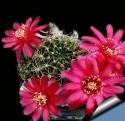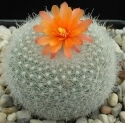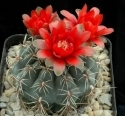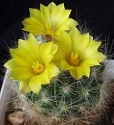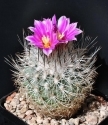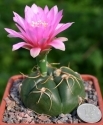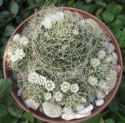
info@semenaopt.com
Directory
TOP 5 for 2026
| Root : repo outstanding Spikes : has 12 radial, pale brown, strong spines Motherland : Bolivia Rod : Lobivia Br . et R . , has 106 species | Flowers : which are small plants with beautiful flowers daytime Root : repo outstanding Motherland : Northern Argentina , Rod : Lobivia Br . et R . , has 106 species | |
| Spikes : at the bottom of the barrel straight, a 1 - 3 cm Leaves : sessile, lanceolate or oval, a length of 7 cm on both sides of the green . Present spikes - small, paired, folded downwards Motherland : tropical area of America, Mexico Rod : Rhode Peireskia (Plum . ) Mill | Height : 4 m Spikes : 1 - 2 thin spike Motherland : Central Brazil, the eastern provinces of Peru, Argentina and Bolivia, Paraguay Rod : Brasi! iopuntia (K . Sch . ) Berg . | |
| Height : 10 cm Spikes : golden yellow, numerous, to 60 in each areola Motherland : South Brazil (Rio Grande do Sul) Rod : Brasilicactus Backbg . | Spikes : radial spikes 20 or more Motherland : South Brazil (Rio Grande do Sul) Rod : Brasilicactus Backbg . | |
| Areola : Elongated ichi round Height : 20 cm (in the grafted state) Flowers : they are dismissed from the top and sides downwards, often simultaneously in droves, several on one areola Root : repo prominent, sharply refined as in cervicalthe junction of the root into the stem Spikes : all spikes evenly spaced, radiant, whitish-yellow with dark yellow ends at the top slightly darker Motherland : Bolivia Rod : Weingartia Word . , counts 17vidov | Areola : densely planted Height : 15 m Motherland : Mexico (Hidalgo, Guanajuato) Rod : Cephalocerciis Pfeiff . | |
| Areola : not located on the projections stems, without bristles only on young shoots have hairs Shoots : up to 2.5 cm in diameter on the stem 7 - 8 lower ribs, sometimes less Motherland : Jamaica, Cuba, Haiti Rod : Selenicereus (Berg . ) Br . et R . | Shoots : waste og stem obliquely upward, the ends of branches up to 3 cm in diameter, highly uneven Motherland : south of the United States to central Mexico Rod : Cylindropuntia (Eng . ) Knuth . | |
| Areola : Woolly, white Height : sometimes a tree with a short trunk up to 2 m , Shoots : salad color, thick, very thin and slightly uneven Motherland : Southwest United States, Mexico Rod : Cylindropuntia (Eng . ) Knuth . | Areola : Small Root : has aerial roots Spikes : numerous, small, brown Shoots : very long, with a diameter up to 1.5 cm faces 5, flat, with a hump . Has stems with low edges or faces , Motherland : Honduras , Rod : Selenicereus (Berg . ) Br . et R . | |
| Areola : initially brown Height : from 2.5 to 3 m , Spikes : strong Shoots : they have two forms: closed erect or disclosed and more splayed Motherland : unknown , Rod : Cereus Mill . , has 44 species and 9 species | Areola : yellowish to brownish Flowers : night, with a big long tube, naked , Spikes : strong Shoots : light green, almost without plaque Motherland : Brazil , Rod : Cereus Mill . , has 44 species and 9 varieties | |
| Root : with a rough part of the root Spikes : often adjacent to the stem in the form of spider legs Motherland : Argentina (Catamarca) Rod : Gymnocalycium Pfeiff . , there were 79 species | Height : 8 cm Motherland : Mexico (Tamaulipas) Rod : Dolichothele (K . Sch . ) Br . et R . - Dolihotele) has 13 kinds | |
| Areola : with white hair Height : 15 cm Flowers : very nice pleasing and abundant flowering plants Spikes : thin, elastic, bright, relatively strong , Motherland : Mexico (CoA upla, Zacatecas) Rod : Gymnocaclus Backbg . , has 10 species | Spikes : 2 to 8, frequently adjacent to the stem asspider legs Motherland : North Paraguay Rod : Gymnocalycium Pfeiff . , includes 79 species , | |
| Spikes : oftenadjacent to the stem in the form of spider legs Motherland : the territory South og Brazil to Argentina Rod : Gymnocalycium Pfeiff . , there were 79 species | Motherland : Mexico (San Luis Potosí) Rod : Dolichothele (K . Sch . ) Br . Et R . - Dolihotele), has 13 species |
Rod
acanthocalycium backbg .
aporocactus lem
astrophytum lem .
austrocylindropuntia backbg
aylostera speg .
brasilicactus backbg .
brasiliopuntia (k . sch . ) berg .
cephalocerciis pfeiff .
cereus mill .
cleistocactus lem .
cliamaecereus br . et r .
copiapoa br . et r .
coryphantha (eng . ) lem .
dolichothele (k . sch . ) br . et r
echinocactus lk . et o .
echinocereus eng .
echinofossulocactus lawr .
echinopsis zucc .
epiphiliopsis berg .
epiphillum haw .
eriocactiis backbg .
eriocereus (berg . ) ricc .
espostoa br . et r .
ferocactus br . et r .
frailea br . ef r .
gymnocaclus backbg .
gymnocalycium pfeiff .
hamatocactus br . et r
hatiora br . et r .
helianthocereus backbg .
heliocereus (berg . ) br . et r .
horridocactus backbg .
hylocereus br . et r .
lepismium
lobivia br . et r .
loxanthocereus backbg .
mammillaria haw
matucana br . et r .
mila br . et r .
myrtillocactus cons .
neochilenia backbg .
neoporteria br . et r .
notocactus (k . sch . ) berg .
opuntia (tournef . ) mill .
oreocereus (berg . ) ricc .
parodla speg .
peireskia (plum . )
peireskiopsis br . et r
pseudolobivia backbg .
rebutia k . sch .
rhipsalis gartn .
selenicereus (berg . ) br . et r
tephrocactus lem .
trichocereus (berg . ) ricc .
weingartia word .
zygocactus k . sch .
